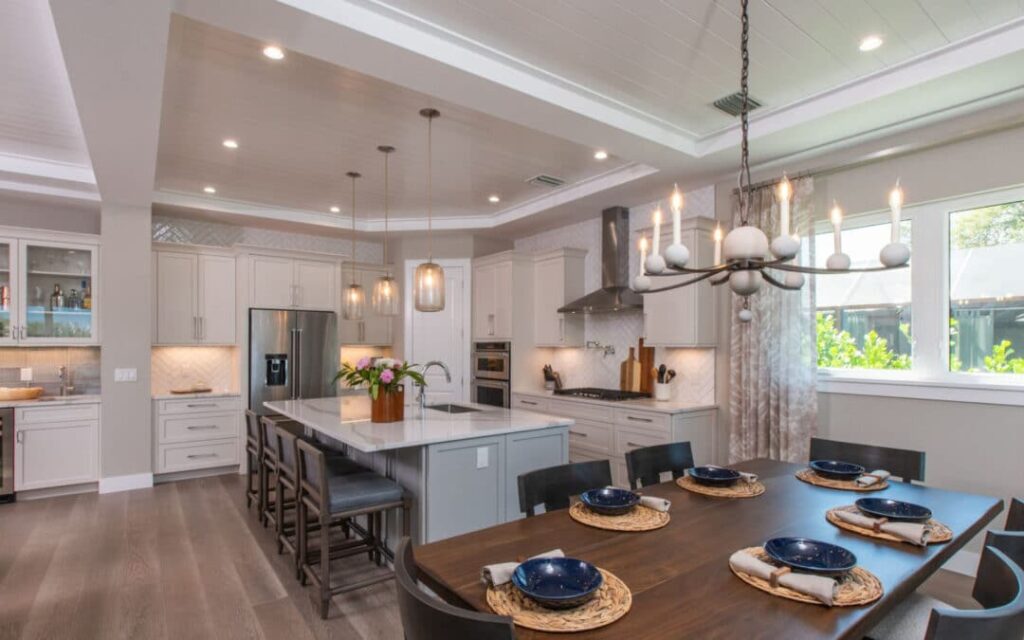Upgrading your home appliances can feel like navigating a maze. With glossy ads pushing the latest gadgets and technology always evolving, it’s easy to wonder: Should you splurge on the newest features, or save your money for appliances where high-tech really counts? The right answer isn’t always obvious. But with the right approach, you can transform your home while making smart, wallet-friendly decisions.
Let’s break down the age-old dilemma—when to save vs. when to splurge on appliance upgrades—so you enjoy both comfort and cost savings.
Why Upgrade Home Appliances?
Upgrading your appliances isn’t just about keeping up with trends. It’s about improving energy efficiency, saving money on utility bills, and enhancing your home’s comfort and value. Older appliances often use more energy, break down more frequently, and lack modern safety features. New models are packed with smart technology, convenient controls, and eco-friendly designs.
Yet, not all appliances deserve a hefty investment. Some last years with basic upkeep, while others offer ROI only with upgraded, premium features. Knowing where your money matters most helps you master the art of appliance shopping.
The Golden Rule: Prioritize Longevity, Usage, and Energy Savings
When considering whether to save or splurge, focus on three essential factors:
- How frequently you use the appliance
- The expected lifespan of the upgrade
- Potential for energy and cost savings
Think bigger on essentials you use every day—and be frugal on occasionally-used extras.
When to Splurge: Appliances Worth the Investment
Some appliances really benefit from top-tier models or the latest technology. Here are a few where extra investment typically pays off:
1. Refrigerators
Your refrigerator runs 24/7, is central to your kitchen, and impacts food preservation and safety. Premium and energy-efficient models offer:
- Consistent cooling performance, reducing food waste
- Features like dual compressors, smart temperature zones, and customizable storage
- Lower energy consumption, saving money long-term
- Advanced water filtration and ice making
For families or foodies, splurging on a reliable, feature-rich fridge pays dividends.
2. Washers and Dryers
Laundry appliances see heavy use, and advances in technology have made energy-efficient, large-capacity models vital for big households:
- High-efficiency washers save water and electricity
- Steam cleaning and allergen-removal cycles protect sensitive fabrics and skin
- Smart connectivity offers remote controls and maintenance alerts
Splurging up front often means fewer repairs, better cleaning, and lower utility costs over the years.
3. Cooking Ranges and Ovens
Home cooks know that precision and consistency elevate any meal. Premium stoves and ovens provide:
- Faster pre-heating and even cooking with convection modes
- Induction technology for energy savings and rapid temperature changes
- Smart features like programmable cooking and self-cleaning
If you love to cook or entertain, investing in a high-end range makes a noticeable difference.
4. Dishwashers
Modern dishwashers offer silence, short cycles, and excellent drying performance:
- Quiet operation for open-concept homes
- Flexible racks for odd-shaped dishes
- Water and energy efficiency
If you replace your dishwasher every 10–12 years, investing in a whisper-quiet, efficient model adds both convenience and peace to your kitchen.
When to Save: Where Budget Friendly Shines
Not every appliance needs to be cutting edge. Sometimes, value models deliver just as much as their luxury peers.
1. Microwave Ovens
Microwaves handle reheating and basic cooking. While some families benefit from extra features, most users stick to basic heating:
- Budget models offer reliable performance for years
- If you rarely cook full meals in the microwave, skip extras like convection or sensor cooking
- Easy to replace or repair
Unless countertop space, style, or advanced functionality matters greatly to you, saving on a microwave is sensible.
2. Toasters, Coffee Makers, and Blenders
Small kitchen appliances often perform key functions but have limited lifespans:
- Basic models handle daily needs
- High-end machines can be worthwhile for aficionados, but casual users won’t notice much difference
- Lower cost means easier replacement
Save money here unless you’re a gourmet chef or coffee connoisseur.
3. Air Purifiers and Fans
While clean air is important, many affordable air purifiers and fans do an effective job:
- Basic models with HEPA filters remove dust and allergens sufficiently
- Extra dollars go to quiet operation, smart features, or futuristic designs
If you live in a mild climate or use them occasionally, saving here frees up your budget for bigger upgrades elsewhere.
4. Vacuum Cleaners
Unless your home is large, extremely carpeted, or home to allergy sufferers, many mid-range vacuums offer excellent performance:
- Upright and stick models clean most debris efficiently
- Premium robotic vacuums can be a convenience splurge, but mid-tier models tackle the basics
Choose based on your flooring type and frequency of cleaning.
Smart Appliances: Splurge Strategically
Smart home features—Wi-Fi connectivity, app integration, voice control, and energy monitoring—are spreading across all price tiers. But not all “smart” upgrades are worth your money. Here’s how to decide:
- Save on “smart” features you rarely use. For example, if you don’t plan to control your oven from an app, skip the high-tech price.
- Splurge if automation will truly simplify your life—like programmable thermostats or refrigerators that help with grocery lists.
Always balance new tech with practical, everyday benefits.
Key Questions to Ask Before Upgrading
Before any purchase, use this checklist:
- How often will I use this appliance?
- Will energy efficiency cut my utility bills?
- Is the upgraded model significantly more durable?
- Are replacement parts and service easily available?
- Does it include features I’ll use regularly—or just nice-to-have extras?
- Am I paying more for brand name than performance?
Being honest about your needs keeps spending focused on genuine value—not hype or up-sell.
Eco-Friendliness: A Modern Must-Have
No matter what you upgrade, consider choosing eco-friendly appliances. Energy Star rated products and low-water-use washers help shrink your carbon footprint and save on bills. Even if they cost a little more upfront, these appliances often pay for themselves over time through savings and rebates.
Real-Life Examples: Upgrades in Action
Let’s look at some scenarios for Tier-1 country homeowners:
- Young Family: Splurging on a high-capacity, energy-efficient washer and dryer makes sense, while a basic microwave suffices for easy meals and snacks.
- Cooking Enthusiast: Investing in a smart convection oven and a powerful, reliable fridge rewards frequent chefs. Stick with a standard toaster and kettle.
- Urban Apartment Dwellers: A quiet, compact dishwasher and high-efficiency refrigerator are worth the price. Save on stand mixers or specialty gadgets you rarely use.
Tips for Making Appliance Upgrades Last
- Read user and expert reviews before purchasing.
- Regularly clean filters and vents to extend lifespan.
- Register products for warranties and consider protection plans for major investments.
- Schedule maintenance for larger appliances (HVAC systems, refrigerators).
- Avoid impulse buying during sales unless you’ve researched first.
With proper care, even budget-friendly appliances can perform for many years.
Conclusion: Shop Smart, Live Better
When it comes to appliance upgrades, the art is knowing when to save and when to splurge. Prioritize performance, efficiency, and features that match your lifestyle—not just flashy new tech.
Spend more where it matters: on high-use, essential appliances and eco-friendly models. Save on gadgets and appliances you use less often or where simple is just as effective. Invest in your home’s comfort and value by choosing wisely and thoughtfully.
Ready to make your next smart appliance upgrade? Review your needs, research options, and invest where it counts. Your wallet—and your future self—will thank you.






